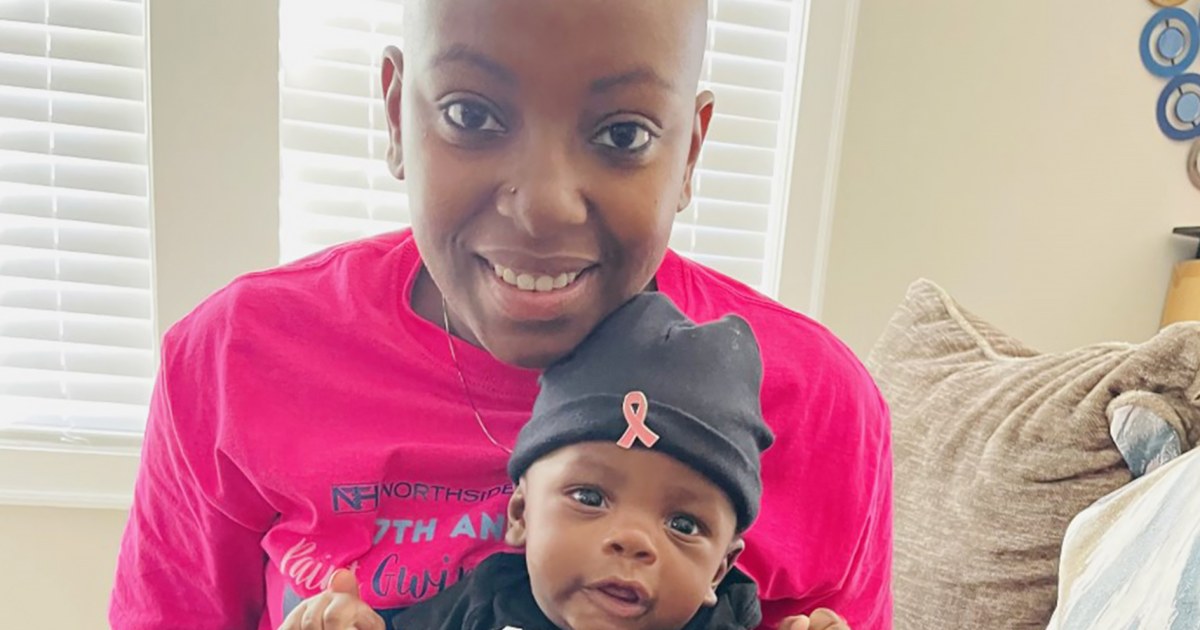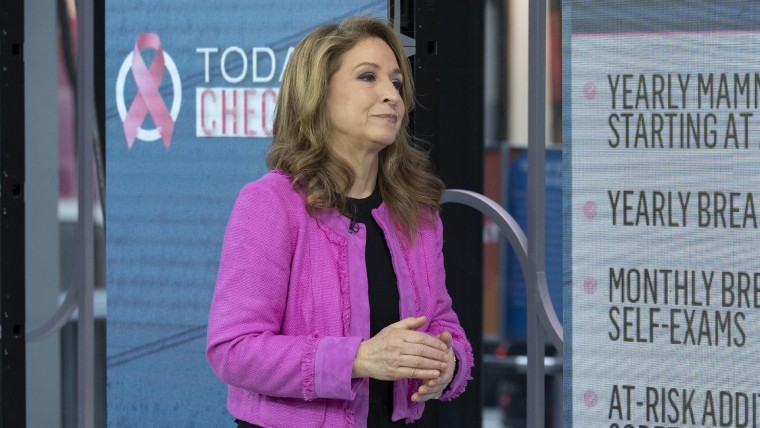Just a day after April Addison gave birth to a baby boy last summer, she was diagnosed with breast cancer.
It seemed impossible. She was 32, fit and experienced with symptoms of the disease as an oncology nurse in suburban Atlanta.
“I was devastated. I asked, ‘How could this happen?’ I work out. I’m very healthy, I’m active. I don’t have a family history of breast cancer,” Addison tells TODAY.com.
“I asked ‘How long do I have left to live?’ because I just wasn’t sure what the prognosis was. I just had this baby, I thought I was going to breastfeed and now you’re telling me I can’t breastfeed. I have to start chemotherapy.”
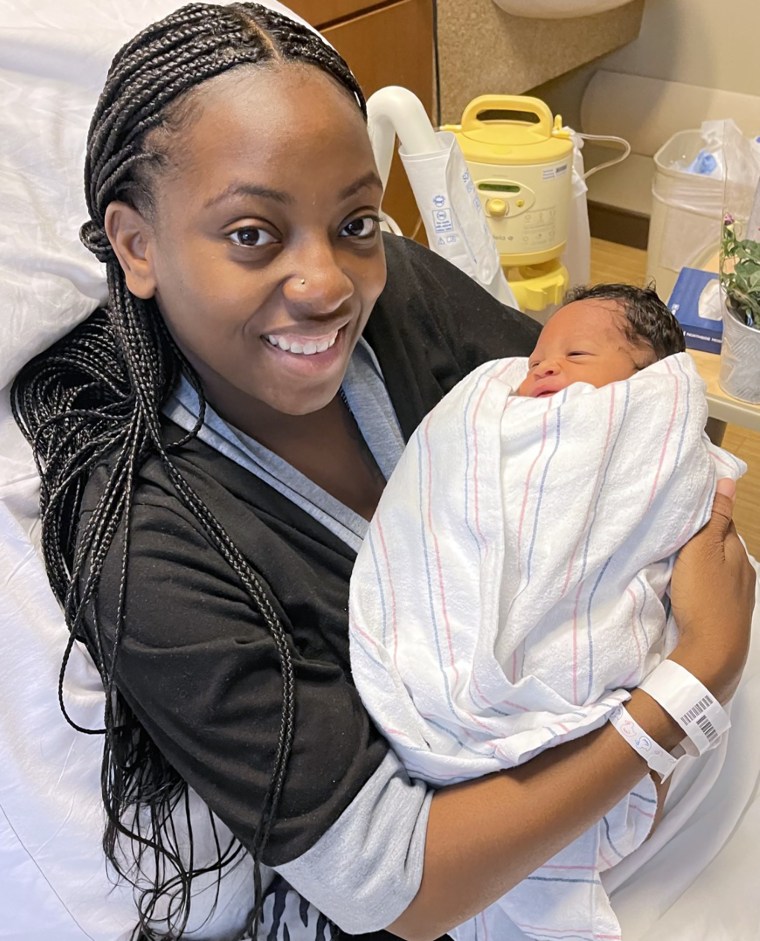
Now Addison and her doctor are urging women of all ages to get checked out if they see or feel any changes in their breasts. Most are diagnosed with breast cancer when they’re over 40, but Dr. Amelia Zelnak has treated patients as young as in their early 20s.
“So at 32, although it’s unusual, it’s not unheard of for someone like April to come in with a breast mass,” says Zelnak, a medical oncologist at Northside Hospital in Atlanta. “Just because it’s less common doesn’t mean that it can’t happen.”
About 1 in 3,000, women are diagnosed with breast cancer while pregnant, she adds.
Breast change
Looking back, Addison spotted the warning sign about six months into her pregnancy — a pea-sized lump that appeared on her left breast and felt like a “small knot” right by her nipple. She thought her body was just getting ready to produce milk.
Since breast cancer wasn’t on Addison’s radar given her age, she didn’t say anything about the change to her obstetrician.
“Women expect their breasts to change during pregnancy… (so) it’s easy to see how someone might not immediately think, ‘I need to get this checked out,’” Zelnak says.
But eight months into her pregnancy, Addison felt a sharp “excruciating” pain in her breast for 30 minutes and brought it up at her last OB appointment along with the mystery knot.
Most patients with breast cancer don’t have any pain, but breast pain still needs to be evaluated by a doctor, especially if it’s associated with a lump, Zelnak notes.
Addison was scheduled for a breast ultrasound the next day, which revealed a mass by her nipple and three enlarged lymph nodes under her arm. A biopsy followed.
Addison gave birth to a healthy baby boy on June 27, 2022. The next day, she found out the biopsy results showed she had stage 2 breast cancer. She needed to start chemotherapy in two weeks.
“In my head, I’m like I have to be strong because I have to get chemotherapy and mentally I’ve got to prepare myself because I want to be here for my children,” says Addison, who also has a 3-year-old son.
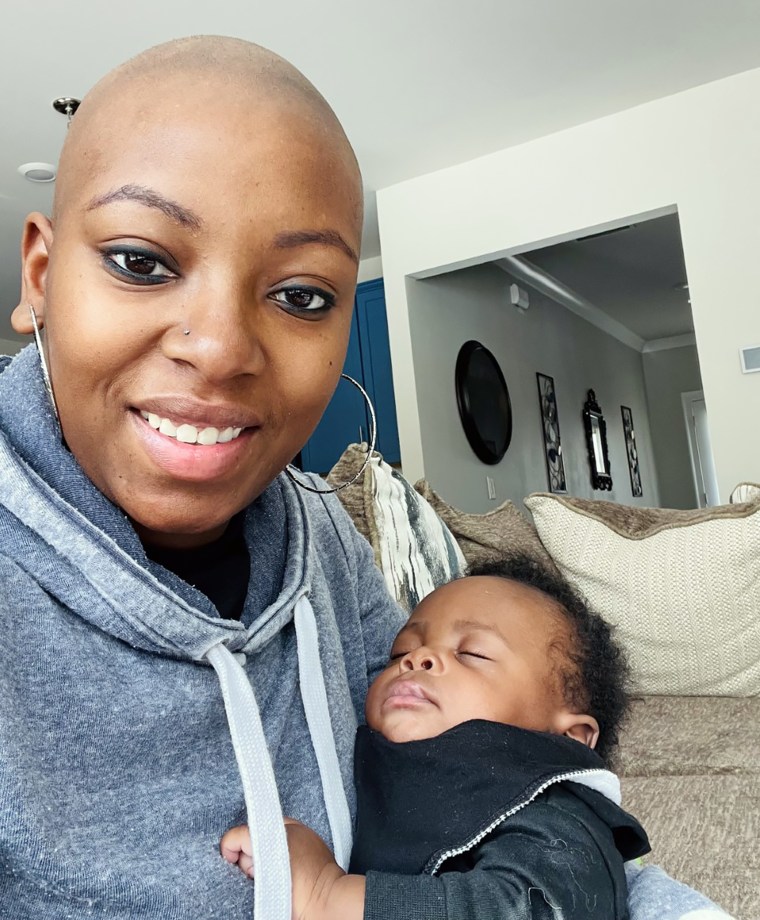
From nurse to patient
She was treated at Northside Hospital Forsyth in Cumming, Georgia, where she works as an oncology nurse. Many of her coworkers came to the infusion center when she started chemo to cheer her on, which gave her strength.
“I did pretty well. I had some fatigue. My biggest thing was my hair loss, which I struggled with the most and then I had some bone pain from the chemotherapy. But I was able to get through treatment pretty OK,” Addison recalls.
Being a patient was a difficult transition for the nurse, who says she lost a sense of control and had a hard time letting people care for her. But she also thinks she’ll be able to give better care to patients now that she’s been on the other side. Addison now knows first-hand the pain of having a port placed or the isolation of being inside a noisy CT scanner.
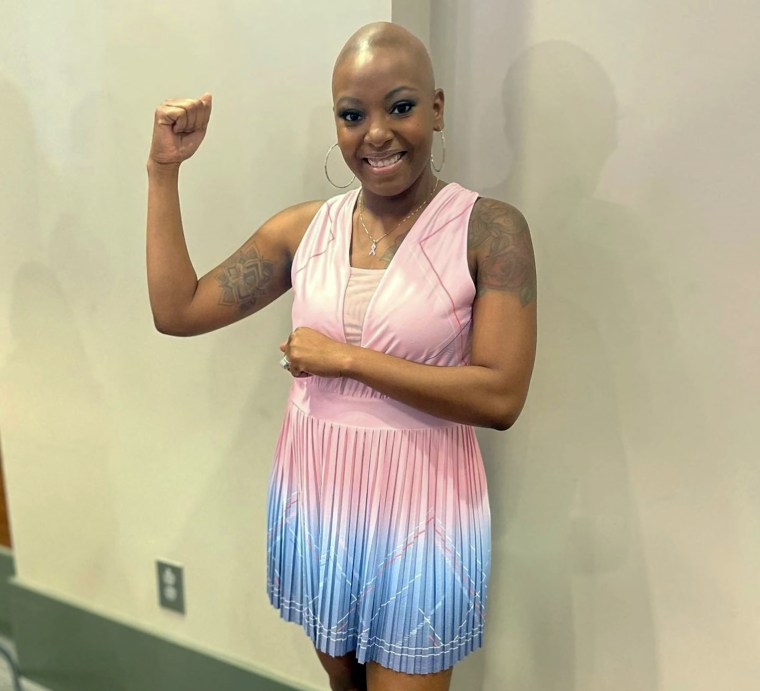
In November 2022, she underwent a bilateral mastectomy with reconstruction, choosing to remove both breasts to lower her chance of reoccurrence.
The surgery doesn’t impact the risk of the cancer potentially spreading to other parts of the body, but it does lower the risk of getting a second breast cancer, Zelnak says.
Addison is now receiving radiation therapy for six weeks and will be on hormone therapy for many years. She has a “great prognosis,” her oncologist says.
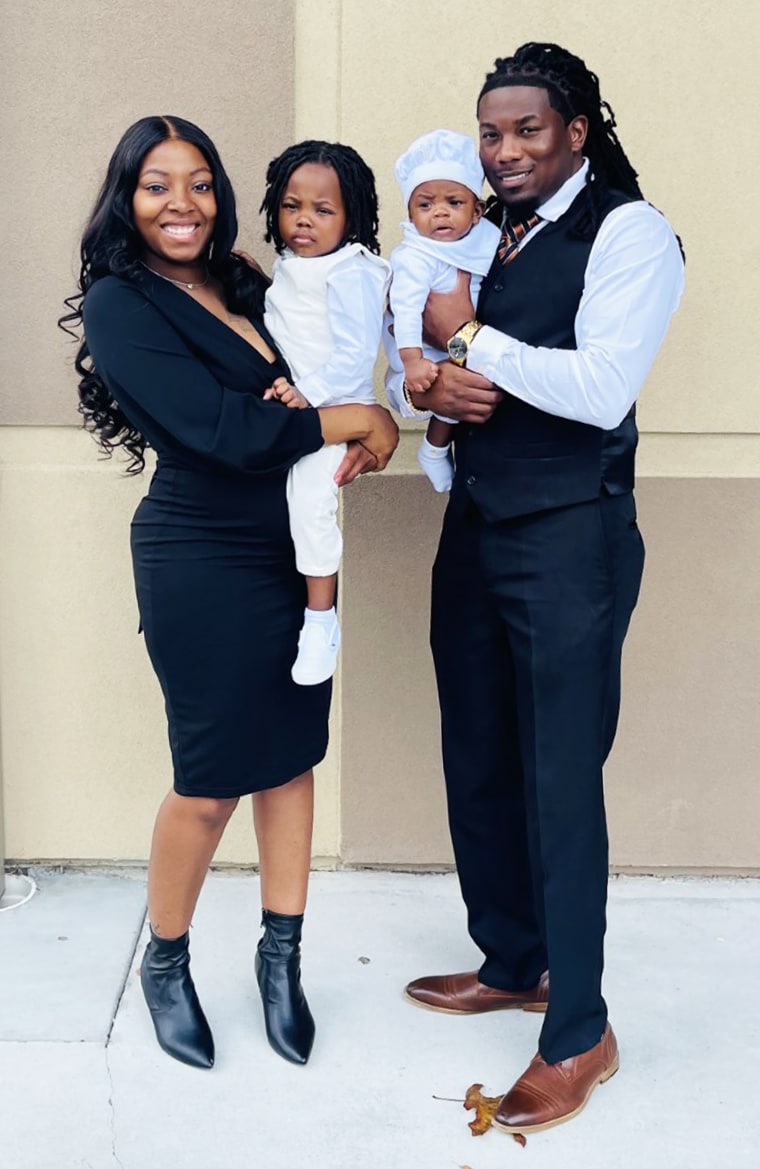
‘If you feel something, say something’
Still, the nurse wonders why the ordeal happened to her. Genetic testing showed she didn’t have any gene mutations known to increase the risk of breast cancer. Studies have found about 85{7b6cc35713332e03d34197859d8d439e4802eb556451407ffda280a51e3c41ac} of breast cancers occur in women with no family history of the disease.
“For many of our breast cancer patients we just don’t know (the reason),” Zelnak says.
“The most common risk factors for getting breast cancer are being female and getting older, but for a patient like April who is so young with no family history, there’s just not an obvious explanation.”
Bottom line: Women of any age, including those who are not yet undergoing mammograms, who feel a lump in their breast need to get it checked out, the oncologist says. Also watch for other potential warning signs like a nipple retracting, skin dimpling or breast swelling. Be your own advocate and bring it up to your doctor.
“If you feel something, say something,” Addison says.
She is healing well and feels grateful for the support from her family. Her kids motivate her to get better.
“When I see their faces, I’m like I’ve got to do this for my babies,” she says. “They give me the push that I need to keep going.”

